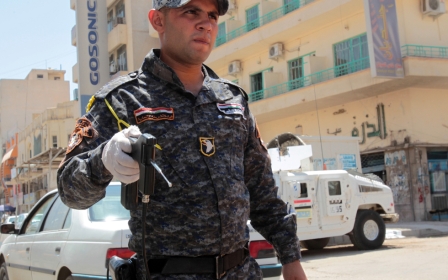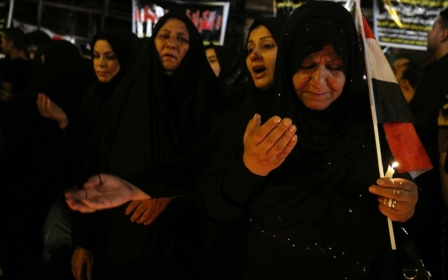Islamic State territory shrinks 12 percent since beginning of year

The Islamic State (IS) group lost 12 percent of the territory it holds in Iraq and Syria in the first half of 2016, according to an analysis by research group IHS.
The analysis published on Sunday said the militant group, which proclaimed its self-styled "caliphate" in the two countries in 2014, is continuing to lose ground after setbacks last year.
"In 2015, the Islamic State's caliphate shrunk by 12,800 square kilometres to 78,000 square kilometres, a net loss of 14 percent," IHS said.
"In the first six months of 2016, that territory shrunk again by 12 percent. As of July 4, 2016, the Islamic State controls roughly 68,300 square kilometres in Iraq and Syria."
Reuters noted that in the last 18 months IS had lost an area the size of Ireland - a quarter of its territory - to hostile forces. Amid such losses its monthly revenue has dropped substantially and it has begun shifting from governance to mass casualty attacks.
In Syria, IS is under pressure from government troops backed by Russian forces, an Arab-Kurdish alliance backed by a US-led coalition and rebel forces.
In Iraq, coalition-backed security forces, working with pro-government militia groups, have dealt the militants a series of defeats.
IS forces are currently under siege in the Syrian town of Manbij, which lies on their main supply route between Syria and Turkey.
In March, the militants were routed from the ancient Syrian city of Palmyra and in June from the Iraqi city of Fallujah.
In 2015, the group lost Tal Abyad, a key border post on the Syrian-Turkish border, as well as the Iraqi city of Ramadi.
In May the Pentagon said that IS had lost some 45 percent of the territory it held in Iraq and between 16 percent and 20 percent of its territory in Syria.
The IHS report did not include percentages by country.
IHS senior analyst Columb Strack said the losses were likely to mean IS would redouble its attempts at "mass casualty attacks".
"As the Islamic State's caliphate shrinks and it becomes increasingly clear that its governance project is failing, the group is reprioritising insurgency," he said.
"We unfortunately expect an increase in mass casualty attacks and sabotage of economic infrastructure, across Iraq and Syria, and farther afield, including Europe."
IS has also seen its revenues drop, from about $80m a month in mid-2015 to $56m a month by March 2016, according to IHS.
"This figure has probably continued to decrease since March by at least another 35 percent," said Ludovico Carlino, another senior analyst at IHS.
"Combined with the military setbacks on the ground, this is having an impact on the internal cohesion of the group as indicated by a marked increase in defections and desertions since January," he added.
Facing territorial losses and pressure, IS on Wednesday issued a video describing the "organisation of the caliphate" in which it claimed control of 35 "wilayat" or provinces, including 19 in Syria and Iraq.
Middle East Eye propose une couverture et une analyse indépendantes et incomparables du Moyen-Orient, de l’Afrique du Nord et d’autres régions du monde. Pour en savoir plus sur la reprise de ce contenu et les frais qui s’appliquent, veuillez remplir ce formulaire [en anglais]. Pour en savoir plus sur MEE, cliquez ici [en anglais].





